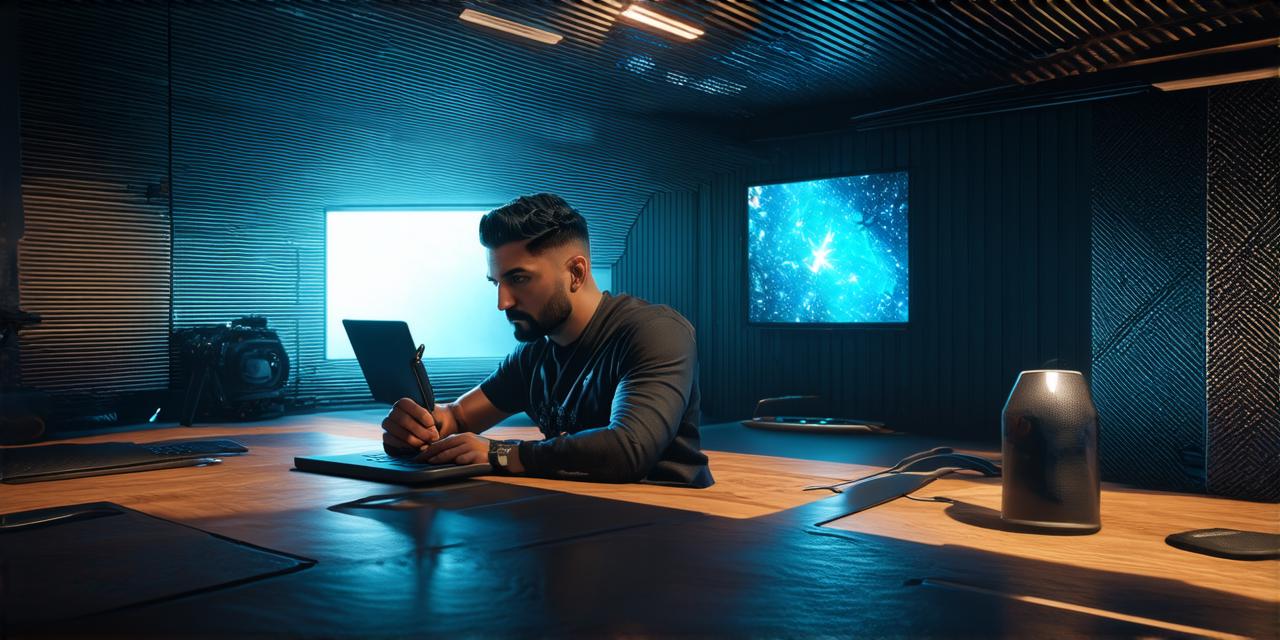1. Understand Your Audience
To create an immersive experience, you need to understand your audience and their preferences. This includes understanding their age range, interests, and cultural background. By doing this, you can create content that resonates with them and keeps them engaged. For example, if your target audience is children, you may want to focus on creating interactive and colorful environments that are easy to navigate and encourage exploration.
2. Use High-Quality Assets
High-quality assets are essential for creating immersive experiences. These include 3D models, textures, lighting, and sound effects. By using high-quality assets, you can create realistic environments that transport your audience to another world. For example, if you are creating a game set in a fantasy world, you may want to use detailed 3D models of creatures, landscapes, and other elements to make the world feel more believable and engaging.
3. Implement AI and Machine Learning
AI and machine learning are powerful tools that can enhance the immersive experience by making it more interactive and dynamic. You can use these tools to create intelligent characters that respond to the user’s actions, generate procedural content based on user inputs, and personalize the experience based on the user’s preferences. For example, in a game set in a post-apocalyptic world, you may want to use AI to control the behavior of NPCs (non-playable characters) and make their actions more unpredictable and dynamic, creating a more engaging experience for the player.
4. Use Physics Simulation
Physics simulation is essential for creating realistic and immersive environments. You can use UE5’s physics engine to simulate realistic gravity, collisions, and other physical interactions. This will make the environment feel more believable and create a sense of realism that draws the user into the experience. For example, in an architectural visualization project, you may want to use physics simulation to show how furniture and objects interact with each other in a space, creating a more realistic and engaging experience for the viewer.
5. Implement Animation
Animation is an essential element of immersive experiences. You can use UE5’s animation tools to create realistic character movements, environmental effects, and other dynamic elements. By using smooth transitions and keyframes, you can create animations that feel natural and fluid. For example, in a game set in a medieval fantasy world, you may want to use animation to show how weapons and armor move and interact with the player’s character, creating a more immersive and engaging experience.
6. Use VR and AR Technologies
VR and AR technologies offer new opportunities for creating immersive experiences. You can use UE5 to develop content for VR headsets or create AR experiences using your smartphone or tablet. By using these technologies, you can create experiences that are more interactive and engaging than traditional 2D content. For example, in an architectural visualization project, you may want to use AR technology to show how furniture and objects interact with each other in a space, allowing the viewer to explore the environment from different angles and perspectives.
7. Optimize Your Projects
To create immersive experiences, you need to optimize your projects for performance. This includes reducing draw calls, minimizing LOD switching, using instancing, and profiling your code. By doing this, you can ensure that your project runs smoothly and provides a seamless experience for the user. For example, in a game set in an open world, you may want to use optimization techniques to reduce loading times and improve performance, creating a smoother and more engaging experience for the player.
8. Use Real-Time Rendering
Real-time rendering is a key feature of UE5 that allows developers to create highly detailed and realistic environments in real-time. This can be especially useful for immersive experiences that require high levels of detail and interactivity. For example, in an architectural visualization project, you may want to use real-time rendering to show how light and shadows interact with different materials and textures, creating a more realistic and engaging experience for the viewer.
In conclusion, UE5 provides developers with a range of powerful tools that can be used to create immersive experiences that engage and captivate audiences.
